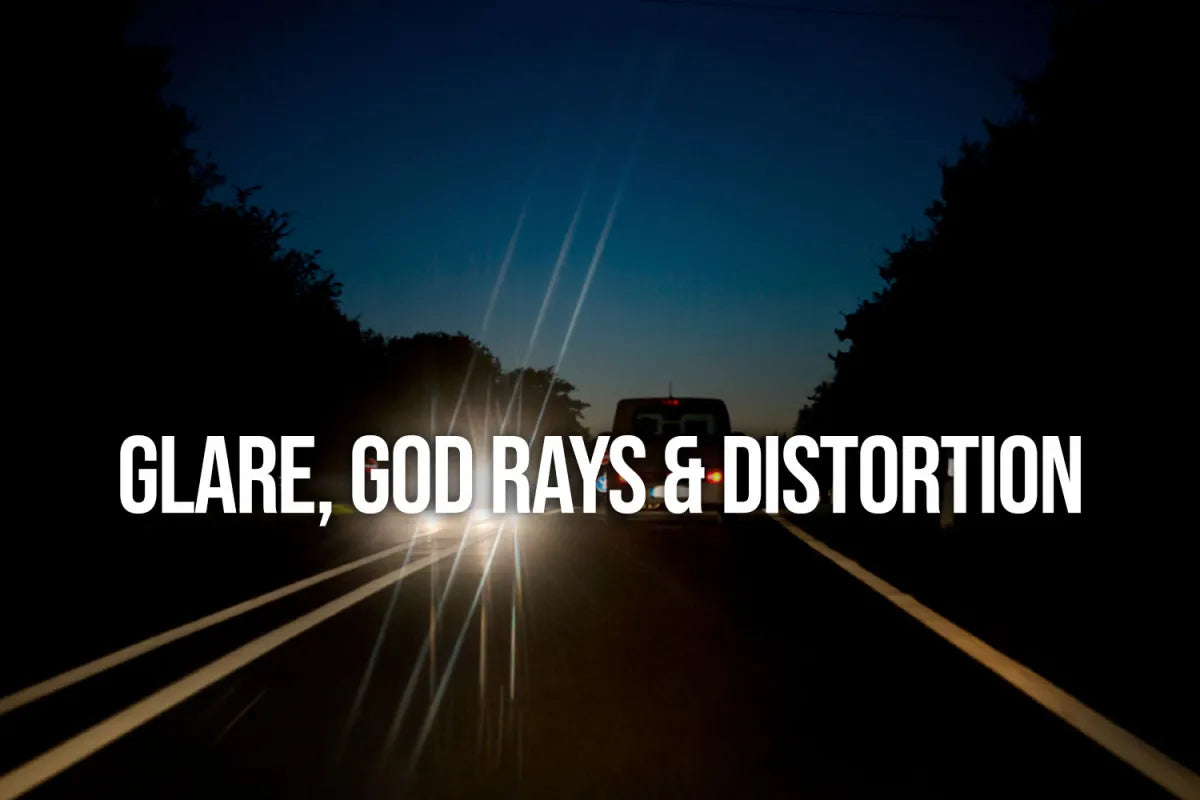Virtual Reality (VR) headsets works with one or two panels, and an optical system with lenses. There are so many variations, aspheric or pancake lenses (or fresnel), glass or plastic lenses, and different panels. No optical system is perfect, and each system has its own drawbacks. The Pimax Crystal uses glass aspheric lenses, which provide high clarity (but at a slightly higher weight).
Glare in VR
In virtual reality (VR), glare refers to an optical artifact that occurs when light scatters inside the VR headset’s lenses. It creates a hazy or streaky effect, often seen as concentric circles or a starburst pattern around bright objects in the VR environment. Glare can occur due to various reasons such as the design of the lenses, the material they’re made of, or the presence of reflective surfaces within the headset. It can sometimes detract from the immersive experience by reducing image clarity and affecting the perceived contrast of the VR display.
Test by Unbound:

God Rays in VR
God rays, in the context of virtual reality (VR), refer to a visual artifact that appears as shafts of light or rays extending from bright objects on the VR display. These rays resemble the effect of light passing through clouds or a stained-glass window, creating a hazy, ethereal glow around high-contrast objects or text on dark backgrounds.
They’re caused by the interaction between the VR headset’s lenses, the display technology, and the way light emits and scatters within the headset. God rays occur due to phenomena like lens reflections, internal reflections, and the diffraction of light. When there’s a high contrast between bright and dark areas on the screen, these rays become more noticeable.
While advancements in VR technology have reduced the occurrence of god rays in newer headsets, they can still be present to some extent, particularly in scenes with high contrast between light and dark elements.
God Rays on Reddit:

Distortion in VR
Distortion in VR refers to any alteration or aberration in the visual presentation that doesn’t accurately represent the intended virtual environment. This distortion can manifest in different ways:
Geometric Distortion: This occurs when the shapes or objects in the virtual environment appear warped or skewed. It’s often caused by the design of the VR headset’s lenses and the way they refract light to create the virtual image.
Chromatic Aberration: This type of distortion leads to color fringing or blurriness around the edges of objects, typically due to different wavelengths of light bending by varying amounts when passing through the VR lenses.
Peripheral Distortion: Some VR headsets might exhibit distortion around the edges of the display, where the image might appear stretched, blurry, or less clear compared to the central field of view.
Latency-Induced Distortion: When there’s a delay between your movement and the corresponding change in the VR environment, it can cause a sensation commonly known as motion-to-photon latency. This delay might create a feeling of disconnect or visual distortion, especially during rapid head movements.
Manufacturers aim to minimize these distortions in VR headsets through advancements in lens technology, display quality, and reducing latency. However, some degree of distortion might still be present in various VR systems.








